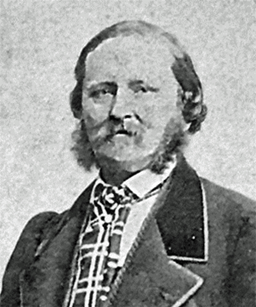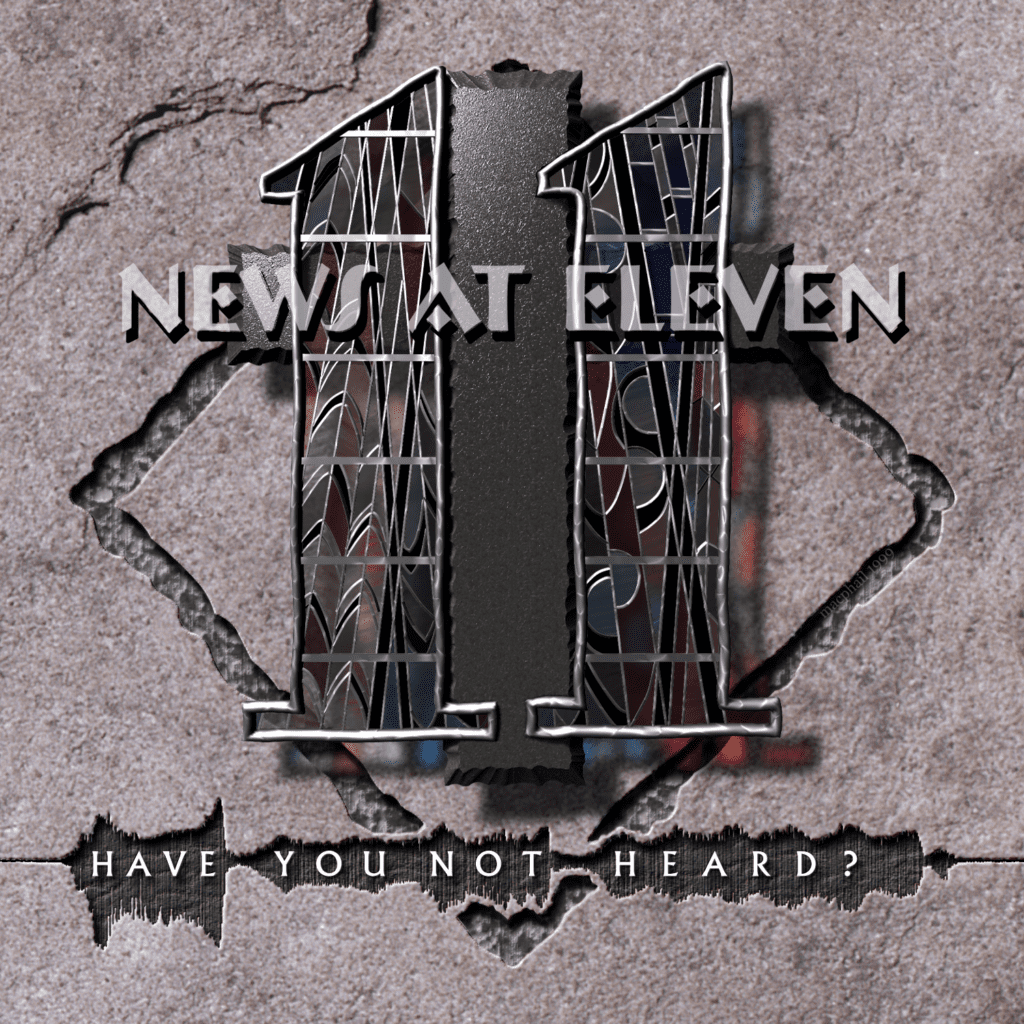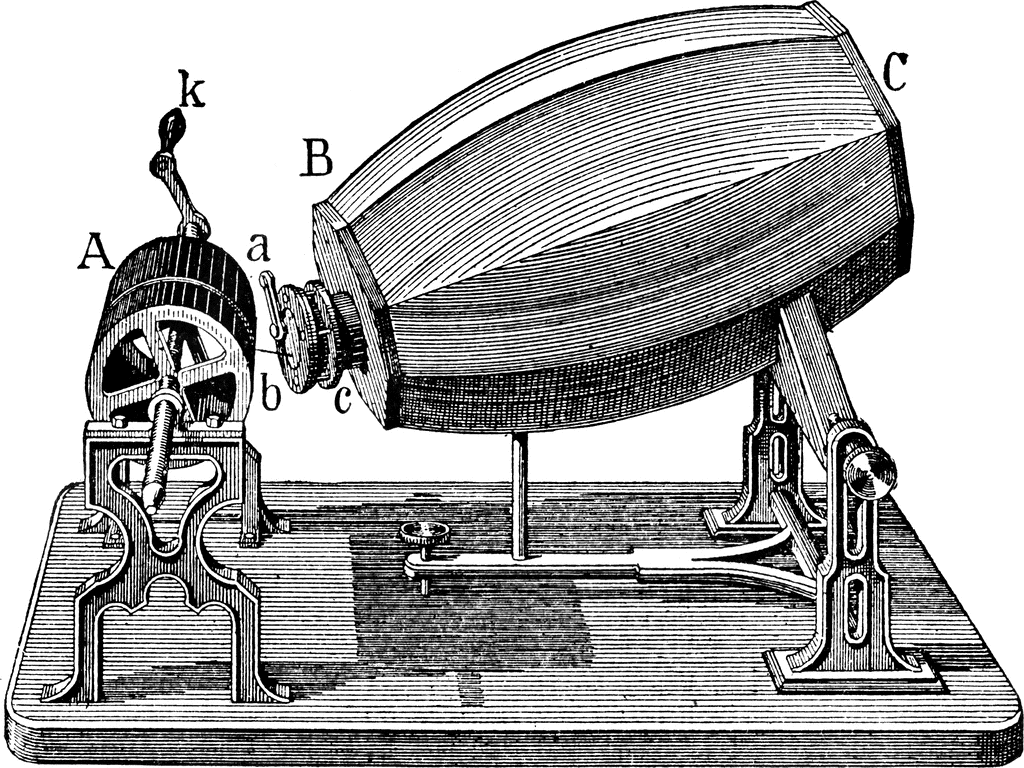Twenty years before Thomas Edison’s great breakthrough in recorded sound, another inventor first conceived of a method of “writing” sound on a blackened piece of paper. But he never intended that his recordings would be played back with a machine. Is it possible to enjoy music that you can’t even hear?
In 1877, Thomas Edison received a patent for his invention, the phonograph. It was the first time anyone had successfully converted a sound wave into a format that could be stored, and then later “recalled” through a playback method. It would be another 11 years after that, in 1888, before one of Edison’s associates would successfully record a musical performance on a medium — a wax cylinder — that proved durable enough to stand up to repeated playings.
But 20 years before Edison’s patent, in 1857, a French inventor, Édouard-Léon Scott de Martinville, conceived of the idea of the phonautograph, a machine designed to inscribe the vibrations of an audible sound onto a permanent medium.

Scott, a typographer and collector of rare books, imagined his task as “the imprudent idea” of recording words as they are spoken or sung.
Scott’s idea, then, was not that you played back these recordings with a machine, like you would with a record player. Rather, he imagined that his machine — which used a hog’s whisker to carve a graphic representation of a sound wave into a layer of blackened lamp soot on a piece of paper — was creating a photograph of sound. You didn’t use a machine to play back these images; rather, he proposed that just as a person might read a story in a book and imagine the narrative as pictures in her head — you’d pick up a book of transcriptions of, say, a famous singer performing an air from a well-known opera, and, literally, read them, filling in the musical details in your mind from what you saw on the page before you. The great composer Ludwig von Beethoven, going deaf later in life, could look at the notes of a printed page of sheet music, and “hear” the melody in his mind without actually being able to physically hear the notes. Perhaps Scott saw his invention as an extension of this kind of capability.
[sws_blockquote_endquote align=”right” cite=”Jeremy Eichler, Boston Globe” quotestyle=”style02″]Just as a camera registered an image of the visual world, he dreamed of a machine that might capture sound, allowing us to visualize the contours of speech or song and to preserve them for posterity. He went on to build just such a device and called it the “phonautograph.” [/sws_blockquote_endquote]
[sws_blockquote_endquote align=”right” cite=”Édouard-Léon Scott de Martinville” quotestyle=”style02″]Can one hope that the day is near when the musical phrase escaping from the lips of the singer will come to write itself…on an obedient page and leave an imperishable trace of those fugutive melodies that the memory no longer recalls by the time it searches for them?”[/sws_blockquote_endquote]
As an aside, another inventor, Parisian Charles Cros, proposed a way to play back the sounds recorded in Scott’s transcriptions. For that reason, Charles Cros is credited with first conceiving of the idea of sound reproduction. But he never built a machine or successfully demonstrated his proposed process. It was only weeks later that Edison, unaware of the advances made on the other side of the Atlantic, first proposed the phonograph. Edison’s was the first machine to successfully achieve the feat of reproducing an audible sound after writing it to a stored medium.
Scott, meanwhile, died in 1879, aware of Edison’s inventions and angry about what he saw as Edison’s misconstrual of the purposes of recording technology. Edison’s phonograph was the first successful example of sound reproduction; Scott saw his technology more like a form of transcription — literally, “writing speech,” which is what the word phonograph actually means.
Of course, it doesn’t take a modern reader very long to figure out which of these views prevailed. Ours today is a society absolutely awash in all forms of recorded and reproduced sound. Mr. Scott wasn’t wrong in thinking that being able to transcribe sounds might be useful to document a performance such as a speech or a dictated letter, but I think he failed to see the bigger picture.
While Edison was the first to contemporaneously create a playback system for his recordings, in recent years, researchers have also discovered alternative ways to retrieve sounds from printed media using optical processes. These are critical because even “successful” recordings made by Edison and others in the 1880s and beyond, are now so fragile with age that they have not been mechanically played in many, many years.
[blockquote blockquote_style=”boxed” align=”right” text_align=”left” cite=”” style=””]Mr. Scott wasn’t wrong in thinking that being able to transcribe sounds might serve a purpose, but he failed to see the bigger picture.[/blockquote]
Using the same sorts of scanning technologies that have rescued recordings made on early Edison wax cylinders, in 2007, researchers David Diovannoni, Patrick Feaster, Richard Martin, and Meagan Hennessey, working with scientists from the Lawrence Berkeley National Laboratory, successfully used an optical process to decode an 1860 recording of “Au Clair de la Lune” made by Mr. Scott.
In that respect, at least, Mr. Scott’s phonoautograms are earlier–much earlier–recordings than Mr. Edison’s. But it’s only with a major boost from future technologies that Mr. Scott’s recordings have become playable; he certainly never imagined anything like the processes that were used to recover his work.
It’s fascinating to think of what Mr. Scott believed about humanity’s potential: that if we could learn to read books and create images in our heads, surely it was just a matter of time before we could teach ourselves to learn to read squiggles on a page and create music in our minds.
At the same time, as an audio professional who spends most of his working day looking at waveforms, I am comfortable saying that I don’t believe humanity — especially casual music listeners — could have ever reached the point that Mr. Scott imagined we would.
[blockquote]Those of us who work in digital audio workstations such as Pro Tools or Logic get pretty good at “reading” certain features of a waveform without actually hearing them.[/blockquote]
With a little practice, it becomes easy to spot common features of the spoken word when they’re expressed in a solo waveform — especially if you already know what words are being depicted. Hard consonants like “t” and “k” usually make a large spike that’s easy to spot. Fricatives like “ff” and sibilants like “ss” appear as a furry ball of white noise, usually with a small gap separating it from the syllables before and after.
Musical instruments sometimes have recognizable waveforms, too. Lower-pitched sounds, like that coming from the low E string on a bass guitar, have longer waveforms and appear chunkier and more spaced apart when looking at them isolated on a solo track. Brass instruments, especially trombone, have a bizarre, lopsided waveform that give the outward visual appearance that there’s something wrong with your equipment.
In full mix tracks, it’s usually fairly easy to read changes in the density of a track. The instrumentation or dynamics sometimes change from one section to the next, and often it’s possible to pick that out on a waveform. Breakdowns — where all or most of the instruments drop out for a short time to build up expectation before a big, final chorus — are usually very easy to spot.
Are all these differences in waveforms interesting? Sure, certainly. Are they “artistic?” Well, in 1999, I thought so, enough to include my own voiceprint in the cover artwork for News At Eleven’s first album, Have You Not Heard?

But are these waveforms “artistic” in the sense that one might be interested in looking at a whole book of them and appreciating the music contained in them, like a great work of literature?
Not to this audio professional. I’ve been doing this for a while now, and I’m nowhere near able to “read” waveforms like Mr. Scott imagined we’d all be able to do after his machine inevitably became a great success. Most words, even with clear breaks between syllables and telltale shapes for certain sounds, are not distinct enough to comprehend from a waveform. Other than the occasional chunky low note, it’s difficult to see differences in pitch at all. Put it all together in a full mix, and all of these markers become even harder to spot.
Still, it’s cool to think that it’s already been 150 years since an inventor first committed a waveform to paper. It took a huge dose of modern technology to get sounds back off that paper, because no one had yet developed the ability to “read” his recordings as he’d intended. Someday I’m sure someone’s going to invent some kind of brain implant that lets people read waveforms or barcodes directly, without the help of a machine.
Until then, they’re still mostly just squiggles on a page.
Until then, we still have Edison to thank for coming up with a way of getting sound out of his machine, not just into it.


